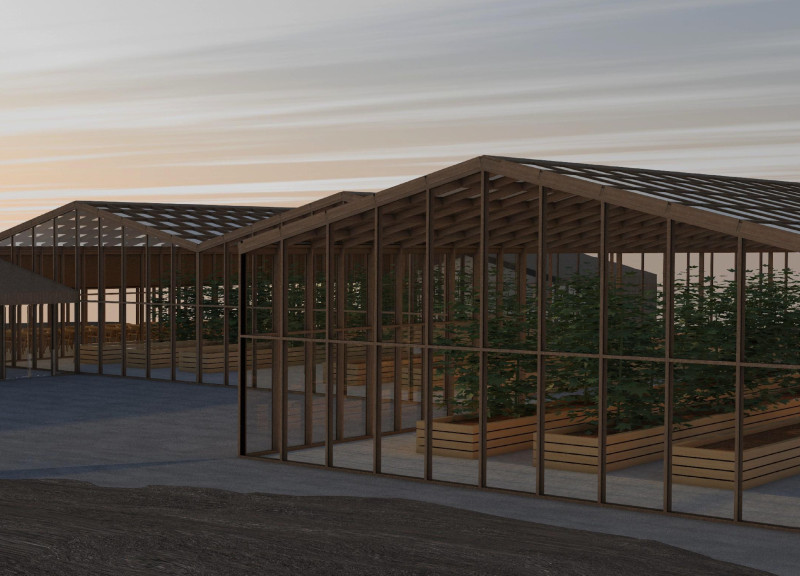5 key facts about this project
The Iceland Greenhouse Restaurant is an innovative space that combines dining with agricultural practices. It is located in a setting that emphasizes sustainability and connection to the land. The design focuses on creating a cohesive relationship between the restaurant and its greenhouse, offering patrons a fresh culinary experience centered on local produce. This project embodies a philosophy that emphasizes environmental care while enhancing the dining experience.
Spatial Organization
The arrangement of spaces in the restaurant and greenhouse is carefully planned. Site plans and floor plans show how the restaurant is oriented to allow ample natural light to filter inside. This design choice not only enhances the dining atmosphere but also provides the ideal conditions for plant growth in the greenhouse.
Accessibility and Circulation
Attention to circulation is evident in the layout. The plans define separate areas for dining, kitchen activities, and greenhouse operations, yet these spaces are interconnected. This thoughtful design makes it easy for staff and customers to move efficiently throughout the building. The layout encourages interaction with the greenhouse, providing a direct link to the fresh ingredients showcased in the restaurant.
Visual Connections
The use of windows and glass walls plays a crucial role in the design. These features provide views into the greenhouse and connect the indoor environment with the outdoor landscape. The vertical arrangements create an open atmosphere, allowing natural light to illuminate the interiors. This approach reduces the need for artificial lighting and promotes energy efficiency.
Material Considerations
While specific materials are not outlined in the presentation, the context suggests a focus on environmentally friendly options. This reflects the project's dedication to sustainable practices and supports the idea of using local resources. Such choices enhance the overall theme of responsibility towards the environment and the local community.
A prominent feature of the design is the greenhouse that sits next to the dining area. This element fosters a direct relationship between diners and the source of their meals, creating a space that encourages appreciation for the food provided. The integration of cultivation and cuisine is central to the dining experience, highlighting the restaurant's commitment to fresh and responsible food sourcing.





















































